Introduction
Nepal, a landlocked country nestled in the Himalayas, has a rich and diverse culinary heritage that reflects its unique geography, history, and cultural traditions. Nepali food culture is deeply rooted in the use of local ingredients, traditional cooking techniques, and a vibrant blend of flavors. In this article, we will explore the fascinating history and cultural significance of Nepali cuisine.
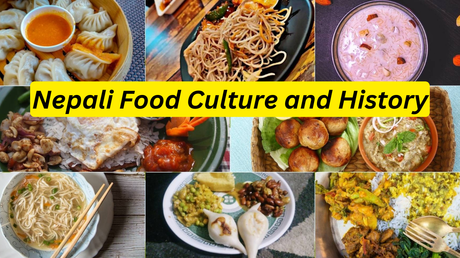
1. Origins of Nepali Cuisine
Nepali cuisine has evolved over centuries, influenced by the country’s geographic diversity and historical connections. The food culture of Nepal draws inspiration from Indian, Tibetan, and Central Asian culinary traditions. It has also been shaped by trade routes and migrations, resulting in a unique fusion of flavors.
2. Staple Foods in Nepali Cuisine
The foundation of Nepali cuisine revolves around staple foods like rice, wheat, corn, millet, and lentils. Rice, in particular, holds great significance and is a staple in most Nepali households. Dal Bhat, a combination of lentil soup and steamed rice, is considered the national dish of Nepal.
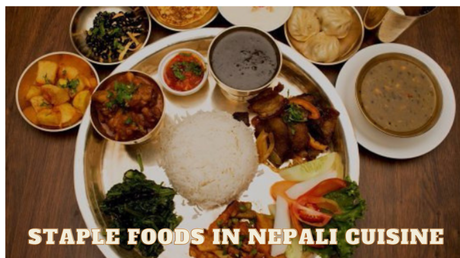
3. Spices and Flavors

Nepali cuisine is known for its vibrant and aromatic spices. Commonly used spices include cumin, coriander, turmeric, ginger, garlic, and chili. These spices not only add depth of flavor but also offer various health benefits. The balance of flavors is essential in Nepali cooking, combining sweet, sour, bitter, and savory elements.
4. Traditional Nepali Dishes
Nepali cuisine boasts a wide array of traditional dishes. Some popular examples include momo (steamed dumplings), gundruk (fermented leafy greens), sel roti (sweet rice bread), and dhindo (finger millet porridge). These dishes showcase the diversity and creativity of Nepali culinary traditions.
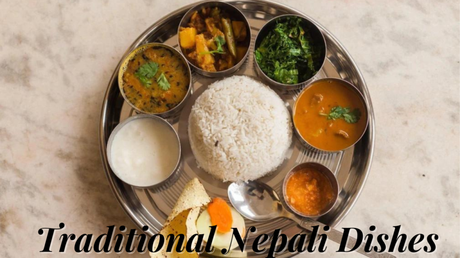
5. Regional Variations
Nepal’s diverse topography and ethnic composition contribute to regional variations in food culture. Each region has its own specialties and unique flavors. For instance, Newari cuisine from the Kathmandu Valley is known for its rich and elaborate feasts, while Thakali cuisine from the Mustang region offers a flavorful blend of Tibetan and Indian influences.
6. Festivals and Food
Festivals play a vital role in Nepali culture, and food is an integral part of these celebrations. During festivals like Dashain and Tihar, families come together to prepare special dishes and share meals. Festive delicacies like sel roti, kheer (rice pudding), and meat curries are prepared with great love and devotion.
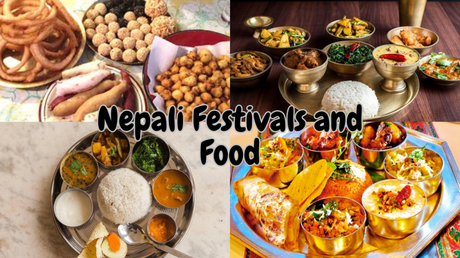
7. Influence of Neighboring Countries
Nepal shares borders with India and Tibet, which have had a profound influence on its food culture. Indian spices and cooking techniques have seamlessly blended with local ingredients, giving rise to unique dishes like Nepali-style curries, tarkari (vegetable dishes), and rotis (flatbreads). Tibetan influences can be seen in popular dishes like thukpa (noodle soup) and momo (dumplings), which have become an inseparable part of Nepali cuisine.
8. Fusion Cuisine in Nepal
As Nepal opens up to the world and embraces globalization, fusion cuisine has gained popularity. Chefs are experimenting with combining traditional Nepali ingredients and techniques with international flavors. This fusion of cuisines has resulted in dishes like yak cheese pizza, Himalayan sushi, and masala pasta, catering to the evolving tastes of both locals and tourists.
9. Dietary Practices and Beliefs
Nepali food culture also encompasses various dietary practices and beliefs. Many Nepalis follow religious traditions that restrict certain foods, such as vegetarianism or abstaining from beef and pork. Additionally, Ayurveda, an ancient holistic healing system, has influenced dietary choices, emphasizing the balance of flavors, nutrients, and energies in meals.
10. Preservation of Culinary
Traditions Efforts are being made to preserve and promote traditional Nepali culinary traditions. Organizations, culinary schools, and local communities are working together to document recipes, conduct cooking workshops, and encourage young chefs to explore and celebrate their heritage. By preserving these traditions, Nepal aims to showcase its unique food culture to the world.
11. Modern Trends in Nepali Cuisine
While preserving culinary traditions is important, modern trends are also shaping Nepali cuisine. There is an increased focus on using organic and locally sourced ingredients, promoting sustainability and supporting local farmers. Additionally, innovative cooking techniques and presentation styles are being introduced, blending traditional flavors with contemporary aesthetics.
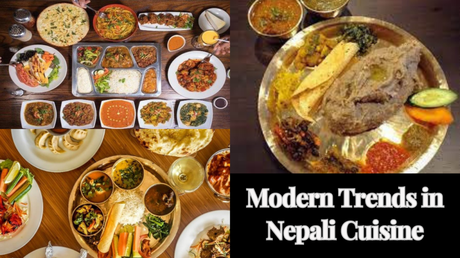
12. Popular Nepali Beverages
Apart from its delicious food, Nepal offers a variety of refreshing beverages. Masala tea (chai), made with a blend of spices and milk, is a popular choice among locals and visitors alike. Chhang, a traditional fermented millet or rice-based alcoholic beverage, is also widely consumed during festive occasions. Additionally, fruit juices, lassi (a yogurt-based drink), and locally brewed beers are enjoyed throughout the country.
13. Street Food Culture
Nepal’s vibrant street food culture is a testament to its culinary diversity. Streets and marketplaces come alive with vendors selling a range of snacks and treats. Chatpate (spicy snack mix), samosas, sekuwa (grilled meat skewers), and pani puri (puffed bread filled with flavored water) are just a few examples of the mouthwatering street food available in Nepal.
14. Culinary Tourism in Nepal
With its unique food culture and stunning landscapes, Nepal is becoming a popular destination for culinary tourism. Travelers can explore food markets, participate in cooking classes, and indulge in authentic Nepali meals. The combination of breathtaking scenery and delectable cuisine makes Nepal an unforgettable experience for food enthusiasts.
Conclusion
Nepali food culture is a delightful blend of history, flavors, and traditions. From staple foods to festive delicacies, the cuisine of Nepal offers a diverse range of dishes that reflect the country’s rich heritage. As Nepal continues to evolve, it strives to preserve its culinary traditions while embracing new influences and trends, making it an exciting destination for food lovers around the world.
FAQs
1. What are some famous Nepali dishes?
• Some famous Nepali dishes include momo (dumplings), dal bhat (lentil soup
2. What are some famous Nepali dishes?
• Some famous Nepali dishes include momo (dumplings), dal bhat (lentil soup with rice), gundruk (fermented leafy greens), sel roti (sweet rice bread), and thukpa (noodle soup). These dishes represent the diverse flavors and culinary traditions of Nepal.
3. Is Nepali cuisine spicy?
• Yes, Nepali cuisine is known for its vibrant use of spices. While it can be spicy, the level of heat can vary depending on the dish and personal preferences. The use of spices adds depth and complexity to the flavors, creating a unique culinary experience.
4. Are there vegetarian options in Nepali cuisine?
• Absolutely! Nepal has a strong vegetarian tradition, and many Nepali dishes are vegetarian-friendly. Dal bhat, tarkari (vegetable curry), saag (leafy green dishes), and aloo tama (potato and bamboo shoot curry) are just a few examples of delicious vegetarian options in Nepali cuisine.
5. How is Nepali street food?
• Nepali street food is a culinary adventure in itself. From savory snacks like samosas and chatpate (spicy snack mix) to sweet treats like jalebi (syrup-soaked pretzels) and sel roti, street food in Nepal offers a wide range of flavors and textures. It’s a must-try for anyone looking to explore the local food scene.
6. How can I experience Nepali food culture?
• To experience Nepali food culture, you can visit local markets, street food stalls, and traditional restaurants. Participating in cooking classes or food tours can also provide insights into the preparation techniques and cultural significance of Nepali dishes. Embrace the flavors, try new dishes, and savor the culinary delights of Nepal.
Read More………..: Click Here

